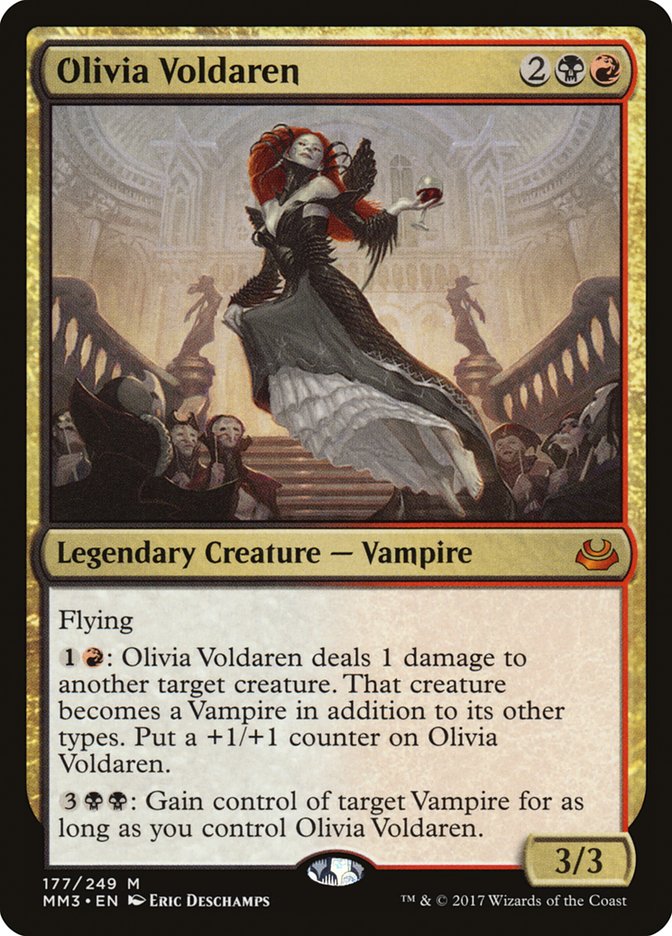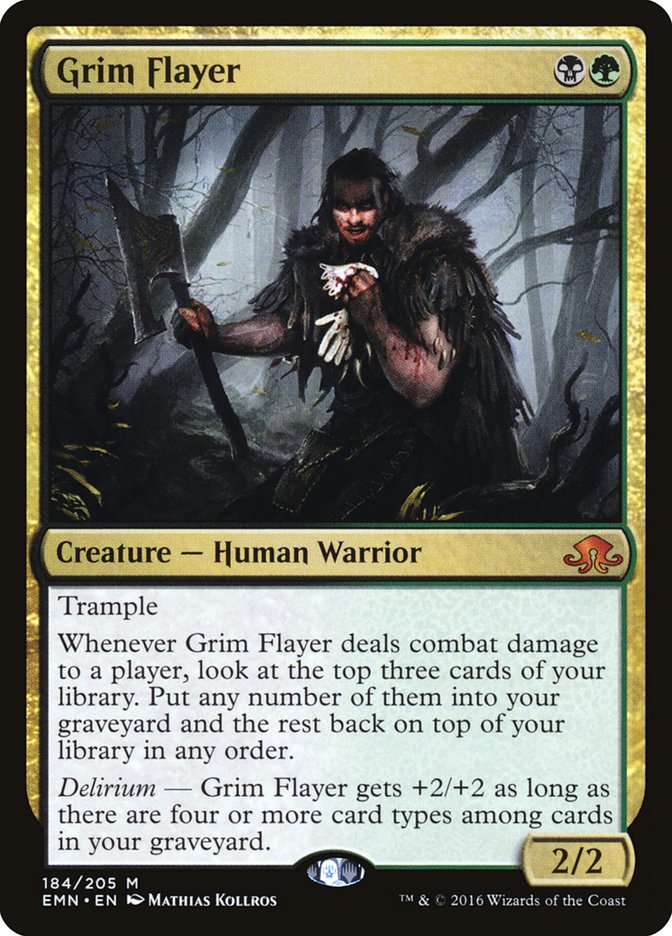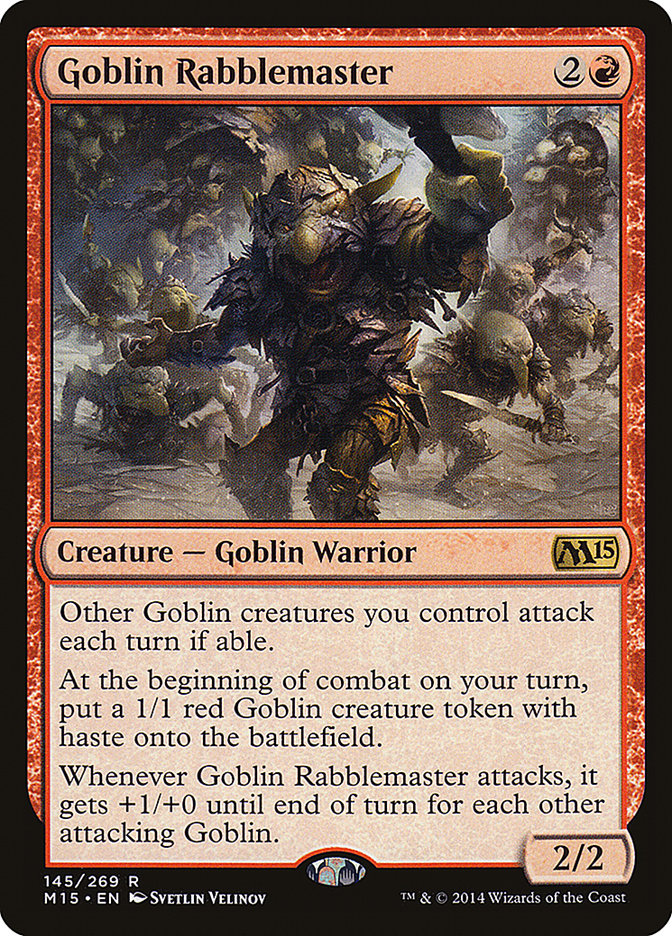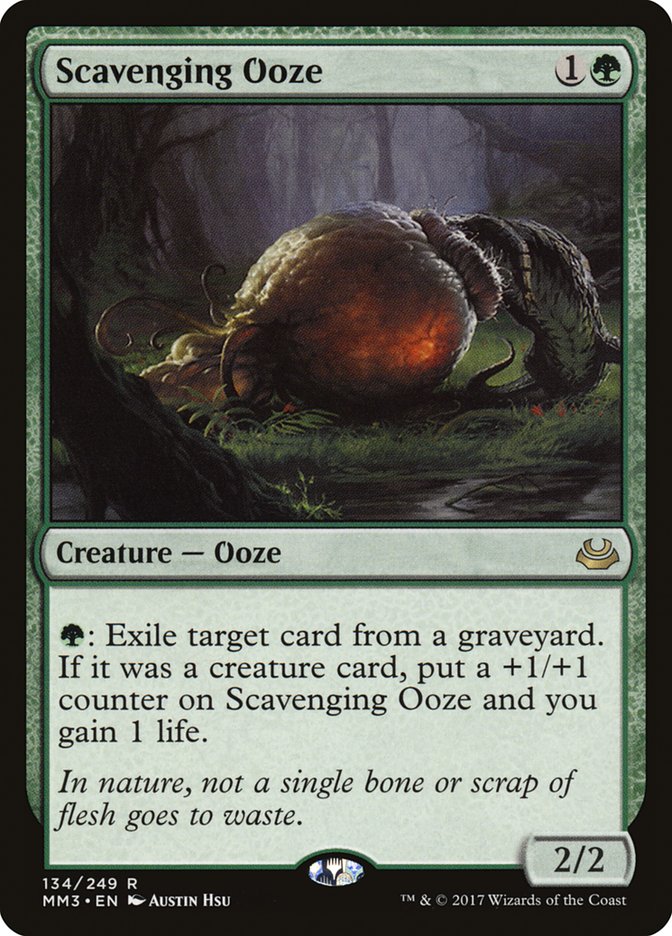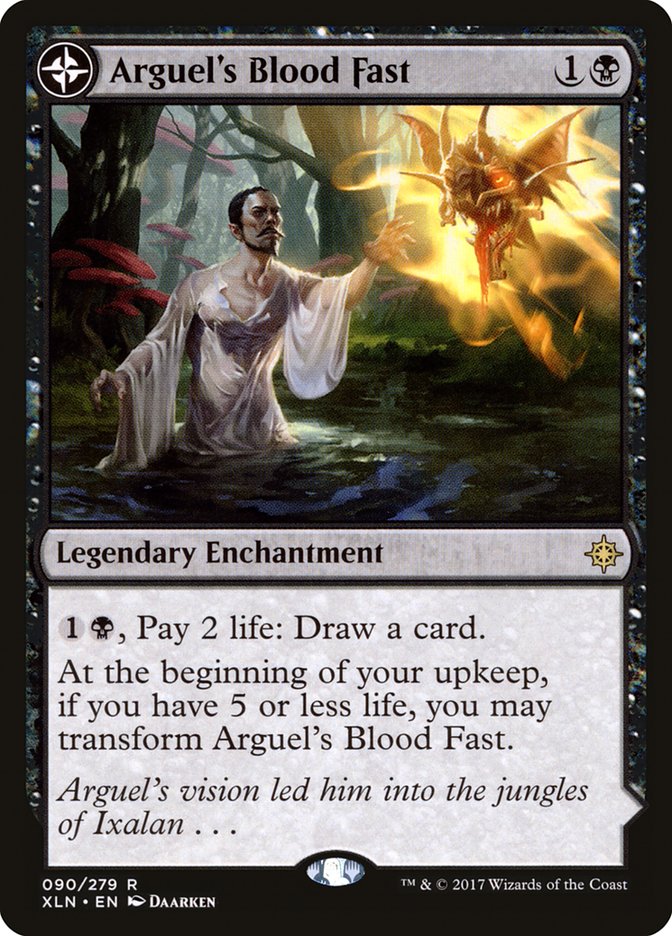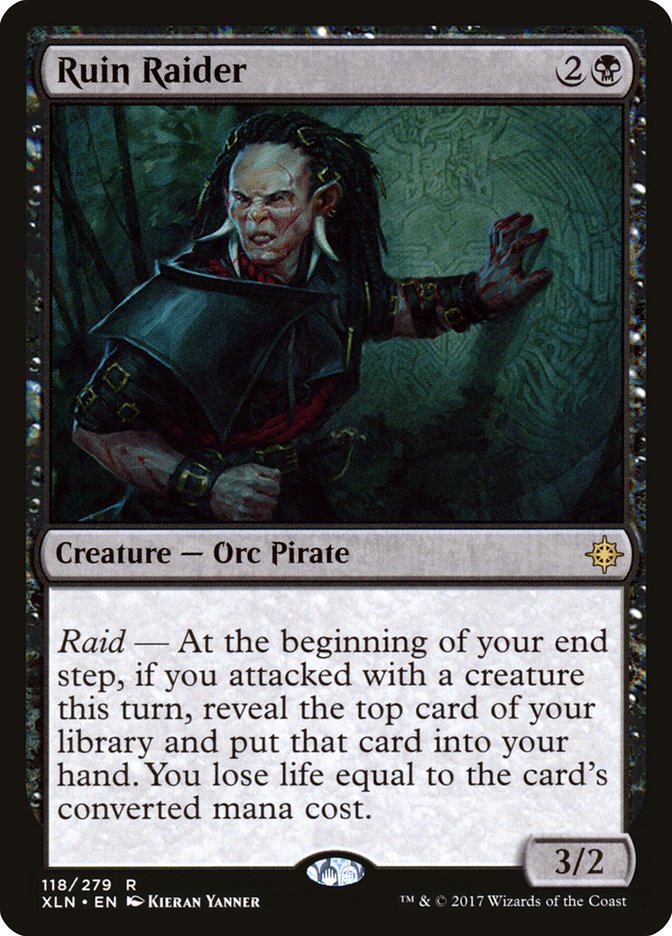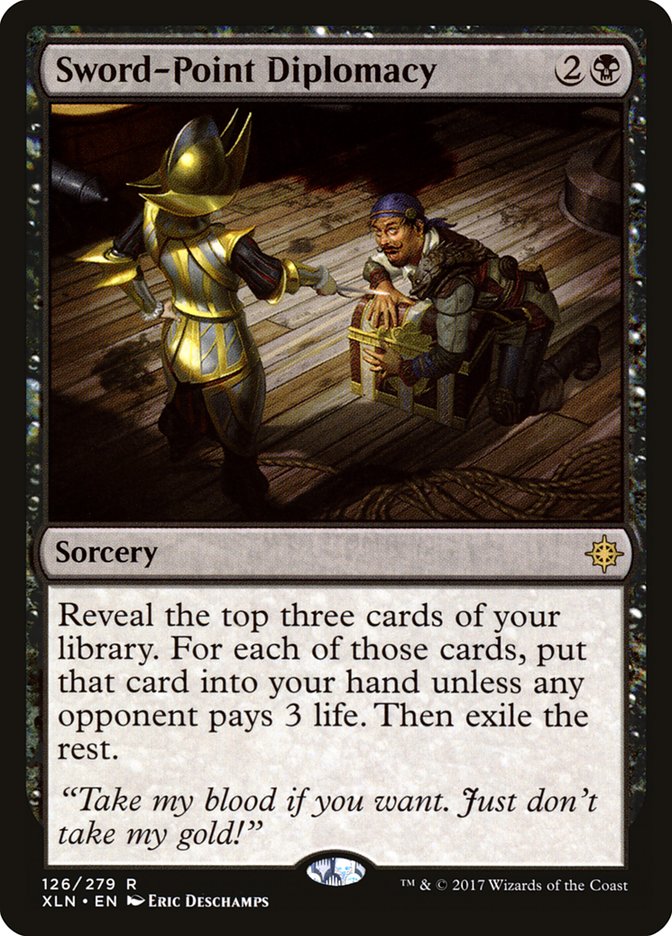My original plan for #SCGKY was to learn to play Storm. The deck is very powerful, possibly the best deck right now, and was likely to be both criminally underplayed and under prepared for. And indeed, Caleb Scherer managed his second Top 8 of the last three Modern Opens, with his only miss still being a Top 16. Archetype specialist or not, Storm’s good right now.
But I ended up not managing to get enough testing with the deck to feel confident piloting it, so I defaulted back to my specialty, B/G/x. Here’s the Jund deck I played to 21st place.
Creatures (13)
Planeswalkers (4)
Lands (23)
Spells (20)

Before we get to the cool part (Goblin Rabblemaster), it’s worth discussing why I switched from Abzan Traverse to Jund for this weekend. In brief, the reason is that I didn’t want to be casting Lingering Souls. With Grixis Shadow on a downswing, there aren’t a lot of midrange decks in Modern right now to be worried about, and midrange matchups are where Lingering Souls really shines. The flip side is that Souls kills very slowly in non-interactive matchups, and that sluggishness will cost you against decks like Tron and Storm. For reference, a total of three Jund decks made Top 32, including one that made Top 8, while not a single Abzan deck did. Jund was the right choice last weekend.
Rabble Jund
The biggest concern I had when deciding on my final list was how to speed up my clock. Traditionally, Jund decks play two four-drops in the main. Options include:
None of these cards kill the opponent very quickly. Indeed, they are mainly geared towards winning midrange mirrors, something I had decided I wasn’t concerned about for this tournament. Further, four-drops are fundamentally awkward in our six-fastland deck. I decided to just skip the fours altogether and round my threats out at a lower mana cost.
The natural thought when looking for additional cheap threats to play in Jund is Grim Flayer, but I didn’t want to go that route. Graveyard hate is on players’ radar with the rise of Storm, and a single Relic of Progenitus turning a Tarmogoyf / Grim Flayer squad from a fearsome force to a pathetic pair was something I wanted to avoid. Overloading on two-drops is not a great plan anyway. You might laugh, but letting their Engineered Explosives be a Plague Wind stapled to a Time Walk is a huge problem in post-sideboard games.
Diving into the math, increasing the number of two-drops we’re playing from ten to twelve takes us from roughly 80% to have one on turn 2 to 85%, assuming we’re on the play with a seven-card hand. With twelve, we’ll have two two-drops by turn 2 a full 50% of the time. Playing a couple of threes instead of a pair of Grim Flayers lowers our on-the-battlefield rate a pretty negligible amount, yet can significantly enhance our power profile.
Originally, I was going to play a pair of Tireless Trackers. Abzan with Tireless Tracker had been doing well on Magic Online, so I figured the card had to be reasonable. I had misgivings, mainly that it was yet another card geared to fight card advantage battles that did not kill very quickly. Still, it was a full mana cheaper than the previous four-drops, so I figured that might be enough additional speed to matter.
After getting some games in, I decided that my fears had been rooted in reality. Tracker was faster than the fours, but still more of a liability than anything else in the non-interactive matchups I wanted to have a shot against. Tireless Tracker was serviceable enough to not be offensive, however, and I was planning on registering two copies until I woke up the day before the event and took a look at the B/R Rat Moon deck.
Just like with Tireless Tracker, the simple fact that a deck with a similar strategy to Jund was playing Goblin Rabblemaster and seeing reasonable success allayed my fears that the card wasn’t at the right power level to be played in Modern. On its face, Goblin Rabblemaster was everything I could ever want: a three-drop that kills very quickly and even leaves some tokens behind after being answered. I was out of time to test, so after a couple of games that convinced me I at least wasn’t making a huge mistake, I registered a pair of Goblin Rabblemasters.
During Day 1, when people would ask, I was telling them that Rabblemaster had been fine. By Day 2, I was excitedly telling my friends that Rabblemaster was the single best deck construction decision I had made in months. I had the misfortune of being paired against Green Tron twice in the tournament, a historically miserable matchup for Jund, but managed to win both times due in no small part to Goblin Rabblemaster.
But more than succeeding in its role as the fastest clock, Goblin Rabblemaster also managed to do a reasonable card advantage impression. Black midrange mirrors in Modern feature so much attrition and trading of resources that even a single leftover token can be a big deal. I wouldn’t go as far as to call Goblin Rabblemaster the red Lingering Souls, but it’s the red Lingering Souls. With true speed alongside nonzero card advantage, there’s a lot to love about Goblin Rabblemaster.
The big reason Goblin Rabblemaster is good now, as opposed to years ago, is the printing of Fatal Push. When Lightning Bolt was the best removal spell in Modern, Rabblemaster would trade for a one-mana spell, leave nothing behind, and there’d be basically nothing you could do about it. Fatal Push needs revolt to be enabled to kill a Rabblemaster, and that’s much easier to sequence around. Not once in the tournament did a Goblin Rabblemaster of mine resolve and not make a single token.
The rest of the choices in my Jund build were fairly straightforward. I knew I wanted as much discard as I could fit into the 75 to have the best chance against Tron, Titan Shift, and Storm. In fact, the playset of Thoughtseize was a must. I ended up finding room for all eight discard spells, with the fourth Thoughtseize in the board instead of the main to help game ones in aggressive matchups.
Often you’ll see three copies of Scavenging Ooze in Jund, but I was pretty happy with my decision to go down to two. As great as Scavenging Ooze can be in the late-game, a turn 2 Ooze is not scaring anyone. Since my priority for this tournament was a quick clock, going down to two made sense.
I’m incapable of moving on from Jund without saying a few words about one of my all-time favorite two-drops, Dark Confidant. The Jund strategy of trading cards left and right and pulling ahead with whatever’s left over is hugely complemented by Dark Confidant. Every decision I made in this build of Jund was geared towards a fast clock, but I never once considered cutting Dark Confidant for Grim Flayer or some other heavy hitter. The additional disruption that Confidant lets you access is more than worth the reduced power, and when it draws you into a Rabblemaster, your clock is as fast as it needs to be anyway.
The New Contestants
If you love Dark Confidant as much as I do, you probably get pretty excited every time a new card comes out that lets you trade life for cards. Luckily for people like us, Ixalan has some promising new entries in the series.
I played a lot of Erebos, God of the Dead in Theros Standard, so it’s easy for me to imagine Arguel’s Blood Fast being a playable card. Paying two mana for a card is a fine deal; paying two life in addition, less so. Erebos was supported by the lifegain on Gray Merchant of Asphodel, and I do think some lifegain is necessary to support this effect. It’s nice that Vraska’s Contempt comes stapled to a little bit of lifegain, as every point matters.
This is a card-for-life effect that belongs in a control deck or a midrange deck on the control side of the spectrum. As an enchantment, it doesn’t provide any battlefield presence on its own. Dark Confidant might only be a 2/1, but that’s a very real body that attacks and blocks and can fit into an aggressively slanted deck. Pure card access needs a slower shell. Fortunately, since the life cost is a static two and not a dynamic number dependent on the cost of the card drawn, this card can be played alongside the high-mana-cost cards a control deck wants.
On the flip side, Ruin Raider is a card-for-life effect that thrives in an aggressive shell. Not only can Raider attack on its own, it’s at its best when surrounded by other creatures that want to attack. Almost always, you will want to deploy Ruin Raider in the second main phase of your third turn after getting an attack in with your turn 2 play.
This means that Ruin Raider is better than Dark Confidant in one very important way: it draws you the first card before your opponent has a chance to untap. With good sequencing, this means Ruin Raider will always get you at least one card. That’s a big deal and makes me very excited to play with Ruin Raider.
The last card from Ixalan that messes around with exchanging life for cards goes in an entirely different direction with it: it’s your opponent who will be losing life to stop you from gaining cards. In general, cards that give your opponent options are hard to evaluate, with the only prevailing guideline being that they are always worse than you think they are. Further, the more choices your opponent gets, the further down you have to knock the card. Sword-Point Diplomacy gives our opponent a whopping eight total different choices on how to resolve the spell, and that’s a lot.
Still, the numbers on Sword-Point Diplomacy are high enough that I’m still potentially interested. We just need to make three life matter. Sword-Point Diplomacy is going to be at its best in an aggressive shell that can force the opponent into only having bad decisions. And it probably wants to be played as a four-of, as each successive copy you cast gets much closer to simply reading “draw three cards.”
Exploring Extra Card Aggro
So we have three new Dark Confidant-esque effects, two of which want to be played in aggressive decks and one which would be more at home in a control shell. Let’s take a look at what we can do with an aggressive deck featuring Ruin Raider and Sword-Point Diplomacy.
There’s little reason to be mono-black. There’s no card in the format I’m more excited to play alongside Sword-Point Diplomacy than Unlicensed Disintegration. B/R Aggro sounds like a good place for these cards to be. Let’s start from the build Ari Lax talked about earlier this week:
Creatures (20)
- 3 Bomat Courier
- 4 Scrapheap Scrounger
- 4 Syndicate Trafficker
- 4 Dread Wanderer
- 1 Captain Lannery Storm
- 4 Ruin Raider
Planeswalkers (3)
Lands (23)
Spells (14)
Sideboard

Ari’s already playing Ruin Raider, and it looks really good in the deck. However, if we’re trying to play Sword-Point Diplomacy, we’re going to have to change a few things.
What does playing Sword-Point Diplomacy imply about what we want to do? For one, every three damage we deal will eventually turn into an extra card garnered from Sword-Point Diplomacy. I’m quite interested in maxing out on Lightning Strike, and I might even want to play Shock over Fatal Push.
We can expect to have a lot of lands, as our opponents will be inclined to give us every land we flip with Sword-Point Diplomacy. Having ways to use our mana in the late-game will be important, but we don’t want to just raise our curve, since we do have Ruin Raider to think of. Earthshaker Khenra is a great way to do this, and so is Cut // Ribbons.
With all that in mind, here’s my list:
Creatures (18)
Lands (22)
Spells (19)
Sideboard

It’s an interesting point of tension that Sword-Point Diplomacy makes legendary permanents worse, which is why I cut the fourth copy of Heart of Kiran.
Chandra, Torch of Defiance may very well end up being a better top-end for this style of deck than Sword-Point Diplomacy, but I think it’s still too early to be sure. This build pushes Sword-Point Diplomacy about as far as it can be pushed and really punishes the opponent for every card they choose not to give us. Time will tell whether that’s enough.




